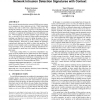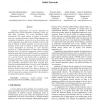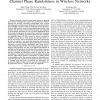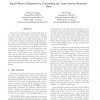348 search results - page 46 / 70 » On a Network Forensics Model For Information Security |
CCS
2003
ACM
14 years 18 days ago
2003
ACM
Many network intrusion detection systems (NIDS) use byte sequences as signatures to detect malicious activity. While being highly efficient, they tend to suffer from a high false...
HICSS
2006
IEEE
14 years 1 months ago
2006
IEEE
: e-business organizations are heavily dependent on distributed 24X7 robust information computing systems, for their daily operations. To secure distributed online transactions, th...
INFOCOM
2011
IEEE
12 years 10 months ago
2011
IEEE
—Recently, there has been great interest in physical layer security techniques that exploit the randomness of wireless channels for securely extracting cryptographic keys. Severa...
SECURWARE
2008
IEEE
14 years 1 months ago
2008
IEEE
Email worms and the spam associated with them are one of the main operational security issues today because they waste time, money and resources. The high incidence of email worms...
MMMACNS
2001
Springer
13 years 11 months ago
2001
Springer
Abstract. Many design flaws and incorrect analyses of cryptographic protoAppeared in the Proceedings of the First International Workshop on Mathematical Methods, Models and Archit...




